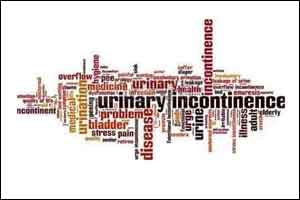- Home
- Editorial
- News
- Practice Guidelines
- Anesthesiology Guidelines
- Cancer Guidelines
- Cardiac Sciences Guidelines
- Critical Care Guidelines
- Dentistry Guidelines
- Dermatology Guidelines
- Diabetes and Endo Guidelines
- Diagnostics Guidelines
- ENT Guidelines
- Featured Practice Guidelines
- Gastroenterology Guidelines
- Geriatrics Guidelines
- Medicine Guidelines
- Nephrology Guidelines
- Neurosciences Guidelines
- Obs and Gynae Guidelines
- Ophthalmology Guidelines
- Orthopaedics Guidelines
- Paediatrics Guidelines
- Psychiatry Guidelines
- Pulmonology Guidelines
- Radiology Guidelines
- Surgery Guidelines
- Urology Guidelines
Abdominal hypopressive technique for urinary incontinence not found effective

The abdominal hypopressive technique has been taught to 1500+ coaches in 14 countries. There is no scientific evidence that a workout widely marketed to manage the symptoms of a leaky bladder and/or womb prolapse actually works, conclude experts in an editorial published online in the British Journal of Sports Medicine.
The abdominal hypopressive technique, or AHT for short, has been taught to more than 1500 coaches in 14 countries and has been widely publicised on TV and on social media.
AHT is a breathing and corrective postural technique, which aims to lessen abdominal pressure--the theory being that this can involuntarily activate muscles in the abdominal wall and pelvic floor, so reducing urinary incontinence and pelvic organ prolapse.
It was developed in the 1980s by a physical therapist, Dr Marcel Caufriez, and is widely known and used in Europe, and North and South America.
It involves breathing in deeply through the diaphragm and contracting the abdominal muscles after fully breathing out and holding the breath before relaxing.
AHT is one of the several methods based on breathing exercises and correction of body posture, which have been proposed as ways of preventing or treating prolapse and urinary incontinence. Others include Pilates and Tai Chi.
But the trial data indicate limited or "questionable" effects for these techniques, and in the case of AHT, no evidence at all, including when added to pelvic floor muscle exercises, for which there is strong evidence of effectiveness.
Pelvic floor muscle exercises were first described in the late 1940s by Arnold Kegel.
"There is undoubtedly a worldwide huge interest of the public and the clinical community in AHT," write Professor Kari Bø, of the Norwegian School of Sport Science, Oslo, Norway, and Mr Sa?l Martín-Rodríguez, of the College of Physical Education, Las Palmas de Gran Canaria, Spain.
"However, to date, AHT lacks scientific evidence to support its benefits. At this stage, AHT is based on a theory with 20 years of clinical practice," they continue.
And they conclude: "At present, there is no scientific evidence to recommend its use to patients. This particular treatment currently illustrates the phenomenon that not all recommended treatments are evidence-based."

Disclaimer: This site is primarily intended for healthcare professionals. Any content/information on this website does not replace the advice of medical and/or health professionals and should not be construed as medical/diagnostic advice/endorsement or prescription. Use of this site is subject to our terms of use, privacy policy, advertisement policy. © 2020 Minerva Medical Treatment Pvt Ltd